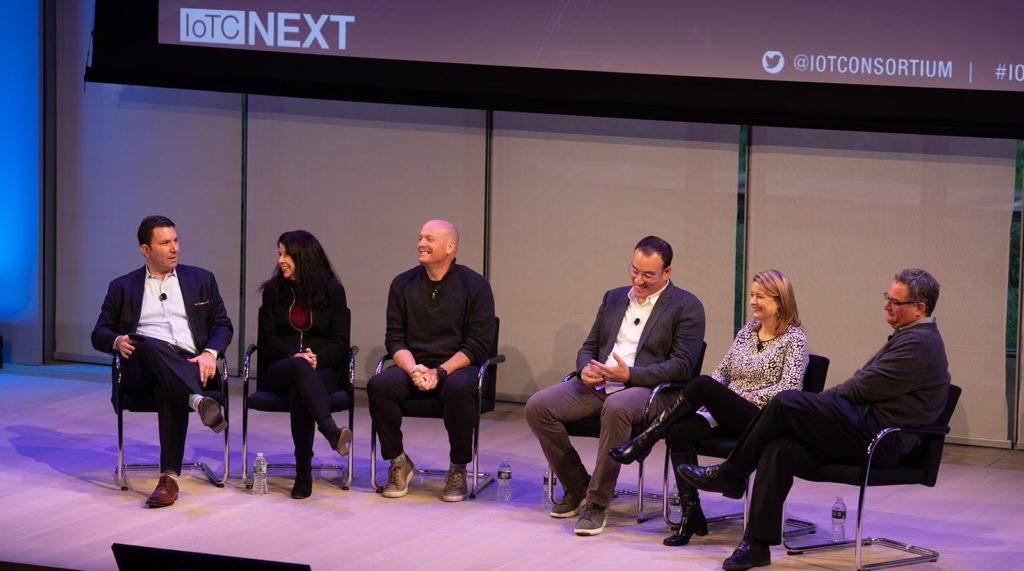
As many integrators seek to pitch their clients on the many wonders of converting their dumb homes into “smart” homes, there are growing indicators that the promise of the smart home is not being reliably delivered up to this point…and may never be, according to one respected industry expert. And there is a growing chorus of others who appear to agree – possibly including Google, who is trying to manage expectations by relabelling the smart home as the “helpful home.”
See the case for the fall of the smart home…
One industry expert I regularly follow is Stacey Higginbotham (Stacey on IoT), who has a broad range of knowledge on everything tech, with a particular expertise in the growing Internet of Things (IoT) market. She has been covering technology for 18-years and boasts an impressive resume, including stints as Senior Editor of Fortune, PC Mag, MIT Tech Review, Gigaom, and Worth Magazine. She is also the co-host of This Week in Google.
In a recent newsletter, Higginbotham described why she has come to believe that the many wondrous promises of the smart home just don’t seem to be happening in any real sense. She says, “The smart home is dead.” As evidence that the world of smart homes is changing, she notes that even Google is seeking to relabel it to the helpful home – an an effort to reduce consumer expectations for the likely disappointment they will feel when their smart home inevitably will let them down.
After 5 Years, Why Isn’t Alexa Getting Any Better?
Higginbotham also pointed to a recent article on The Verge website in which it questioned why, after five years of development, isn’t Amazon’s Alexa getting any better? “Alexa’s functionality is miles wide but inches deep,” the article says. Higginbotham adds that “Amazon’s Alexa offers little more than a new way of interacting with things, without deep functionality or truly new use cases…” that would help to drive the growth of a whole new business.

But what most likely set Higginbotham off was her attendance at a recent IoT Consortium event in New York City. As she has a specific focus on the IoT channel, she spent a lot of time at this event…likely excited to hear about all the latest news and innovation developments. But instead…
“I listened to executives of dozens of companies associated with the smart home talk around its death but never address the fact directly. Instead, they talked about a lack of compelling use cases, how to move beyond a device-specific mindset, and the ways they are trying to handle consumer demand for interoperability in the smart home without actually providing such interoperability.”
Stacey Higginbotham on what she observed at a recent IoT Consortium event
‘Smart’ Speakers Mostly for Music, Not a ‘Smart’ Home
There were some major players at this event, including executives from Google, Allegion, and – wait, isn’t that Charlie Kindel from Control4? What’s he doing at an IoT conference?
Despite the concerted effort of tech industry giants like Amazon, Google, and others, the fact is that people still mostly use their ai-enabled, “smart” speakers for playing music…and occasionally to listen to the weather report perhaps. They are NOT using them their artificial intelligence to power an entire smart home. That fact hasn’t changed in five years.
“I don’t think we’ve done a good job explaining our value proposition to consumers. We have to come up with new stories that isn’t just ‘Go buy another Mini.'”
Mark Spates, Google, as reported by Stacey Higginbotham
Roadblock: Growing Consumer Distrust of Tech
Higginbotham suggests that Spates’ thought may be an oversimplification of the problem. Rather than, as his statement might suggest, engage in more or better marketing to expose consumers to more uses of the technology – there may in fact be another roadblock. And that roadblock, as I have reported on several times, is in part the growing lack of trust consumers are feeling with the proliferation of technology in the home…and concerns surrounding protecting their privacy.
I regularly have integrators tell me that their clients are vocal about these concerns. They either express this openly (i.e. “Who has access to my cloud-connected system”) or indirectly (i.e. “Can I turn that internal microphone off on the smart speaker in my bedroom?”) Each of these thoughts show consumers are concerned about privacy…and distrustful of “connected” devices.
Another issue is the complexity of orchestrating a smart home. This complexity, as I reported recently, was named by one survey as the biggest impediment to greater smart home adoption.

Overselling the Smart Home, There’s No ‘Rosie the Robot’
But Higginbotham raises a good point. As we are wont to do, our industry has oversold the smart home.
“Consumers had a vision of either a Rosie the Robot from ‘The Jetsons’ or perhaps the millennial Pat from the movie ‘Smart House,’ but today’s smart home doesn’t even come close (which is good, since Pat went a bit off the rails). Device makers didn’t meet that vision because they were working on individual gadgets or, in certain cases, a business model that could help monetize some kind of whole home operating system.”
Stacey Higginbotham, in post: “The chickens are coming home to roost in the smart home”
In a nice little coda to her story, Higginbotham reveals that another presentation at the IoT conference was a panel about smart TVs, connected displays and voice. That panel featured some high powered executives from Warner Media and Fox representing the content side of TV. “Neither of them were able to offer a compelling reason for being at a show all about the IoT other than wanting to make it easy for people to access content around the house, in their car, and on their phone.”
There’s Nothing ‘New or Exciting on the Horizon’
Higginbotham walked away “without a sense that there was anything new or exciting on the horizon.”
See Higginbotham’s entire post “The chickens are coming home to roost in the smart home…“





Thanks Ted,
I would say this also falls under the over-hype issue that plagues tech in general. Of course there is consumer frustration when things like voice recognition turn out to be much less than the hype implies. Voice is amazing no doubt, but it is miles wide and millimeters deep, lacks context awareness and of course is not smart at all. Like AI, VR and other terms that are overhyped it is a set-up for disappointment when the end user does not get HAL in their home or business.
Re-naming or re-branding to other things like the “helpful home” is also not enough. The hard work of actual enablement, integration and the rest need to be done, and until then we will get negative reaction. Look at VR, it is growing nicely, but not in the way expected as we still see ads from those like Oculus showing experiences no one can get in their ads. VR for gaming is fun, but many will look past that feeling cheated when they do not get what the ad showed.
This is not bad for integrators or others. What is needed is honest communication. Yes, voice is nice and we can add it, but you will still need control panels, remotes, screens and other methods until some future when we have better systems.
Meanwhile, DIY marketers promise easy integration that often does not work adding to more confusion. I do not agree with Stacy on this. I think this is a common situation in developing markets. Many new adopters may say “smart home” but are just having fun with inexpensive devices buying only a smart speaker and one other item.
This can be viewed as opportunity as well. Marketers need to make clear the differences. Integrators too need to be clear on what is needed to provide the experience the end user is seeking. DIY can be good as it casts its nets wide and gets a whole lot of people into looking at the market. We should not be discouraged that many are not ready to jump as long as more are considering.
Whatever it is called, more intelligence, more enablement and more services will come to the home. Current economic situations aside, the benefits are clear and costs keep moderating so this is a great future. Problems always abound, but persistence will out.
The limited margin retail cost set aside, this stuff takes way more time, trial/error, effort, adapted experience, creativity, and attention to detail than even a great majority of the “pros” in the industry can muster. Added to the reality that even many of the most interested and engaged clients just won’t pay the amount necessary to make the process profitable enough to justify all of that, the Smart Home isn’t dead, it has never really even taken its first breath…
What has started to die is all of the first several generations of cheaply made smart gear which has been obsoleted by simple component failure and OS progression.
Sights are set too high, the traditional Automatic & Easily Controlled Home concept (music, multi-media, lighting, comfort, security, etc.) that has historically been the CEDIA-type integrator’s specialty is by and large quite achievable and satisfying to live with. Pro gear combined with select DIY stuff can make for great experiences. Voice has only made all of that easier to integrate, control and select the features that are actually useful and enhance life. For example, a little earlier I walked towards my bathroom and the lights dimly lit my way, the exhaust fan came on, I finished my business and as I left the space, the lights turned off and the fan will turn off when the timer runs out. Simple MAGIC!
The amateurs will continue to fail (flail) and provide poor experiences, a few professionals will continue to stand out and be rewarded. The more things change, the more the status quo is the result.
Interesting…maybe I should have used you as my expert! Thanks for sharing your thoughts!
Anyone else?
Ted
I am far from an expert, just one of those trying and mostly struggling to make a buck off of some of this wild ride. We have had some luck with the Google Nest and have trended that way. Early on, I gave Alexa way too much of a shake along with Ring and our experience has caused us way too many challenges to continue. Google Nest isn’t perfect by any means, those early TStats have either already failed or been obsoleted also, however, the quality has been superior to the cheaper and cheaper Alexa / Ring offerings. We absolutely love the Eero for these types of systems and have veered to Luxul for more serious packages. We can’t really seem to get away from Sonos, as the prices hike up and the margins get squashed, we do hope for some relief as they clear out the dead wood at Costco, but it has been a little chaotic as all of that shakes out. We do like the Chromecast experience for music and video better than the Prime, it’s just way more open and can be much higher performance quality with it’s ability to stream (cast) Qobuz, 24/96 services, etc. in HiRes.
The traditional Lutron lighting controls and shading products are so far superior than the Z-BEE-Wave toys, that it’s not much of a contest for that side of things. That’s the status quo that I was talking about.
So, all of that paints a pretty crazy picture, that’s why I say the Smart Home has never been that smart and if it has never really had legs, it hasn’t really been on its feet.
Thanks Loren…interesting points all! I’ve talked to other integrators who have leaned to the Google side as well. But outside of a few enthusiastic voice control fans, the bigger number of integrators have held the wave of cheap ai/vc “smart speaker” devices with careful and limited adoption. That caution, I think, is smart…while the Smart Home, so far, is…um…not so much.